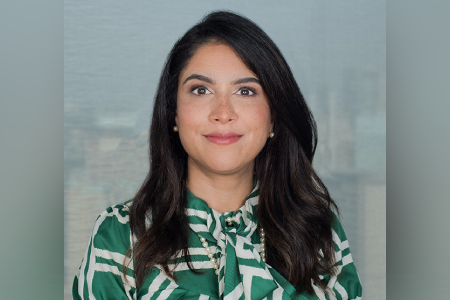Engineering firm hires Sadaf Parvaiz to embed D&I in company’s strategic goals

In a bid to boost efforts to become more welcoming to different voices, engineering firm GHD has hired its first-ever global enterprise inclusion and diversity leader.
Sadaf Parvaiz spoke with Canadian HR Reporter about her plans to head up the department in the company’s ongoing “I&D [inclusion and diversity] journey” and ensure the organization embeds diversity and inclusion in the company’s strategic goals.
“It’s almost a requirement at this point for most global organizations to be successful,” says Parvaiz from Toronto. “It’s just showing that in this dedicated leadership role, they’re trying to implement more accountability, and there’s a genuine willingness and commitment to make progress in this area.”
The company, which has more than 200 offices on five continents and about 10,000 employees, already has I&D projects such as the Reconciliation Action Plan (RAP) in Australia and various employee resource groups (ERG) but more action needs to be undertaken, according to Parvaiz.
“There’s so much passion to it at GHD but it’s just trying to figure out how do we create more social inclusion, looking also externally on how we interact with the communities in which we operate? And also just building in the understanding of how the intersectional nature of people, attributes and how that plays into our employee base and being very thoughtful and also sensitive to those differences,” she says.
Benefits to diversity
There’s a recognition that diverse teams create the creativity, innovation and representation of the communities in which GHD serves, she says.
“Without having that diversity within GHD, we’re not going to be successful. But it’s not enough to just have those diverse teams, it’s about creating that culture where the diversity-of-thought perspectives [and] ideas can actually be brought forth in a safe and supportive environment,” says Parvaiz. “It’s no longer just under an HR nice-to-have but is truly becoming a differentiator in the market.”

Sadaf Parvaiz
Canadian HR Reporter recently spoke with a legal expert about how employers can use surveys to assess their I&D efforts.
While the benefits of being more diverse are readily apparent after years of research, the journey is not always easy, she says.
“It’s harder sometimes to work in heterogenous teams but the outcome is worth the understanding and learning and education and then the effort to make that happen.”
“I don’t think the focus on business case needs to be underscored anymore. It’s more so how do we really create more social equity in where we operate and for our people, because that’s becoming more and more an expectation at this point. Any organization that doesn’t have this as part of their business strategy, they’re going to very soon find that their business will be left behind; we’re seeing it as a priority for boards [in]expecting this, public markets are expecting this,” says Parvaiz.
The business world is changing fast due to the pandemic and the new I&D role is reflecting these movements, says Parvaiz.
“There was a time where face-time was really important; certainly COVID has knocked that down and created opportunities for flexible, remote working and so the importance of face-time with clients is being questioned, and really focusing on the outputs and the quality of the service is becoming more of the important driving factor.”
Canadian HR Reporter also spoke with a people analytics expert to find out how the pandemic means fewer women are in the workforce, and what that means for employers.
Responsibilities of role
Goals for Parvaiz include embedding I&D requirements into the company’s policies and procedures, in a consistent manner and for the longer term.
“[It’s about] how do we create this environment where I&D is part of how we operate, it’s part of the decisions that we make, it’s part of how we interact with one another, and our clients and that it’s not just seen as a responsibility for HR or for the I&D leader but that everyone in their day-to-day interactions has a role to play?” she says.
But the I&D leader role should not be seen as merely a function of the HR department, says Parvaiz, and it needs a steady source of funding.
“The biggest thing is to ensure that this role is a strategic role [and] funding is very important for having a well-resourced and well-funded function in I&D to make sure that all of the goals that are set out are actually achievable and tangible and realistic in terms of the level of resourcing.”
The role also presents a chance to transform how businesses operate, she says.
“There’s tremendous opportunity and responsibility as well to ensure that we create a welcoming place for our people in technical fields, like engineering, science, architecture, where we’ve seen certain populations underrepresented and we are committed trying to create more opportunities and build a longer term pipeline to see more diversity in this field.”




